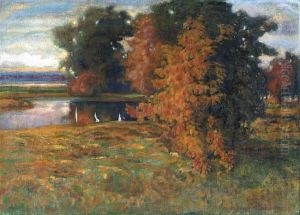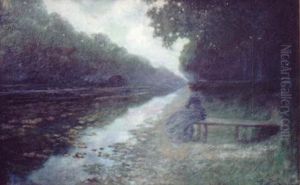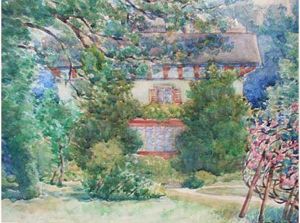Eugeniusz Dabrowa-Dabrowski Paintings
Eugeniusz Dąbrowa-Dąbrowski was a Polish visual artist known for his contributions to painting and graphic arts during the early 20th century, navigating through a turbulent period in European history that encompassed both World Wars. Born in 1895 in Poland, Dąbrowa-Dąbrowski's artistic journey unfolded in a nation undergoing dramatic social, political, and cultural transformations. His work reflects a keen observation of these changes, capturing the essence of Polish landscapes, the spirit of its people, and the complexities of its societal shifts.
Educated in some of the most prestigious art institutions of his time, Dąbrowa-Dąbrowski honed his skills and developed a distinctive style that blended elements of realism, impressionism, and later, elements of modernism. His early works were primarily landscapes and portraits, characterized by a deep sensitivity to color and light, which revealed his profound connection to the Polish countryside and its inhabitants. As his style evolved, so did his subjects, increasingly touching on themes of national identity, the struggles of the common people, and the overarching quest for freedom and sovereignty that defined Poland's history in the 20th century.
Throughout his career, Dąbrowa-Dąbrowski exhibited widely, both within Poland and internationally, earning recognition and accolades for his artistic achievements. Despite the challenges posed by the political climate of his times, including the devastation of World War II and the subsequent imposition of Communist rule in Poland, he remained dedicated to his art, using it as a means of resistance and a testament to the resilience of the human spirit.
Dąbrowa-Dąbrowski's legacy is preserved in the collections of several Polish museums and galleries, as well as in private collections around the world. His works continue to be celebrated for their emotional depth, technical mastery, and historical significance. Eugeniusz Dąbrowa-Dąbrowski passed away in 1947, leaving behind a body of work that continues to inspire and resonate with audiences, serving as a poignant reflection of Poland's tumultuous journey through the 20th century.



